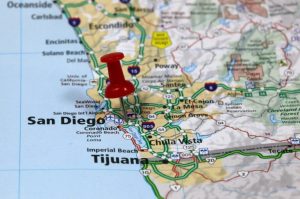Stock Dividends Types, Journal Entries & Examples

For shareholders, DRIPs provide a convenient way to increase their investment without incurring brokerage fees, and they benefit from the compounding effect of reinvesting dividends. Over time, this can lead to significant growth in their holdings, especially if the company performs well. Since the cash dividends were distributed, the corporation must debit the dividends payable account https://x.com/bookstimeinc by $50,000, with the corresponding entry consisting of the $50,000 credit to the cash account.

Time Value of Money
The mechanics of dividend distribution involve several steps, each requiring meticulous attention to detail to reflect the company’s financial position accurately. From the moment dividends are declared to the point where they impact a company’s balance sheet, every entry must be carefully documented. In this journal entry, the what type of account is dividends $18,000 of the dividend received is not recorded as the dividend income but as a decrease of stock investments instead. For example, the company ABC has stock investment in the company XYZ where it holds 30% shares of ownership. On December 31, the company XYZ reports a net income of $500,000 for the year, and at the same time, it also declares and pays the cash dividend of $60,000 to its stockholders. As the normal balance of stock investments is on the debit side, this journal entry will decrease the stock investments by the amount of the dividend received by the company.
Get in Touch With a Financial Advisor
This transaction is straightforward and directly impacts the company’s liquidity, necessitating careful cash flow management to ensure that operational capabilities are not compromised. When a company declares a cash dividend, it commits to paying a specific amount of money to its shareholders. The accounting process begins with the declaration, where the company debits Retained Earnings and credits Dividends Payable. This entry reduces the retained earnings, reflecting the portion of profits allocated for distribution, and creates a liability.
- A stock dividend distributes shares so that after the distribution, all stockholders have the exact same percentage of ownership that they held prior to the dividend.
- A company’s board of directors has the power to formally vote to declare dividends.
- The balance sheet will reflect the new par value and the new number of shares authorized, issued, and outstanding after the stock split.
- It is a reflection of the company’s decision to return value to shareholders, which decreases the retained earnings and, consequently, the total shareholders’ equity.
- This tax treatment underscores the importance of understanding the financial and tax implications of participating in a DRIP.
- For shareholders, the tax treatment of dividends varies depending on the jurisdiction and the type of dividend received.
Journal Entries for Dividends (Declaration and Payment)

Instead, the company prepares a memo entry in its journal that indicates the nature of the stock split and indicates the new par value. The balance sheet will reflect the new par value and the new number of shares authorized, issued, and outstanding after the stock split. To illustrate, assume that Duratech’s board of directors declares a 4-for-1 common stock split on its $0.50 par value stock.

How to account for cash dividends
Just before the split, the company has 60,000 shares of common stock outstanding, and its stock was selling at $24 per share. The split causes the number of shares outstanding to increase by four times to 240,000 shares (4 × 60,000), and the par value to decline to one-fourth of its original value, to $0.125 per share ($0.50 ÷ 4). This often occurs when the company has insufficient cash but wants to keep its investors happy.

- We may earn a commission when you click on a link or make a purchase through the links on our site.
- This liability is recorded in the company’s books, reflecting the company’s commitment to distribute earnings.
- When a split occurs, the market value per share is reduced to balance the increase in the number of outstanding shares.
- The calculation can be done on a per share basis by dividing each amount by the number of shares in issue.
- However, the statement of cash flows will not show the $250,000 dividend as it has not been paid yet; hence no cash is involved here yet.
- For shareholders, DRIPs provide a convenient way to increase their investment without incurring brokerage fees, and they benefit from the compounding effect of reinvesting dividends.
- When a company distributes dividends, it does so from its after-tax profits, meaning the company has already paid corporate income tax on these earnings.
The treatment as a current liability is because these items represent a board-approved future outflow of cash, i.e. a future payment to shareholders. The carrying value of the account is set equal to the total dividend amount declared to shareholders. Once a proposed cash dividend is approved and declared by the board of directors, a corporation can distribute dividends to its shareholders. Receiving the dividend bookkeeping from the company is one of the ways that shareholders can earn a return on their investment.
- As noted, this is often referred to as capitalizing retained earnings, because a portion of retained earnings becomes part of the firm’s permanent invested capital.
- When a company declares and pays dividends, it directly affects its retained earnings, reducing the amount of profit that is reinvested back into the business.
- The date of record establishes who is entitled to receive a dividend; stockholders who own stock on the date of record are entitled to receive a dividend even if they sell it prior to the date of payment.
- Treasury shares are not outstanding, so no dividends are declared or distributed for these shares.
- Dividend Reinvestment Plans (DRIPs) offer shareholders an alternative to receiving cash dividends by allowing them to reinvest their dividends into additional shares of the company’s stock.
- As the business does not have to pay a dividend, there is no liability until there is a dividend declared.
Small Stock Dividend Accounting
The process involves specific journal entries that must be meticulously recorded to ensure accuracy in financial statements. The announced dividend, despite the cash still being in the possession of the company at the time of the announcement, creates a current liability line item on the balance sheet called “Dividends Payable”. The company pays out dividends based on the number of stock shares it has outstanding and will announce its dividend as a certain amount per share, such as $1.25 per share. When paying dividends, the company and its shareholders must pay attention to three important dates. The journal entry to distribute the soft drinks on January 14 decreases both the Property Dividends Payable account (debit) and the Cash account (credit).
